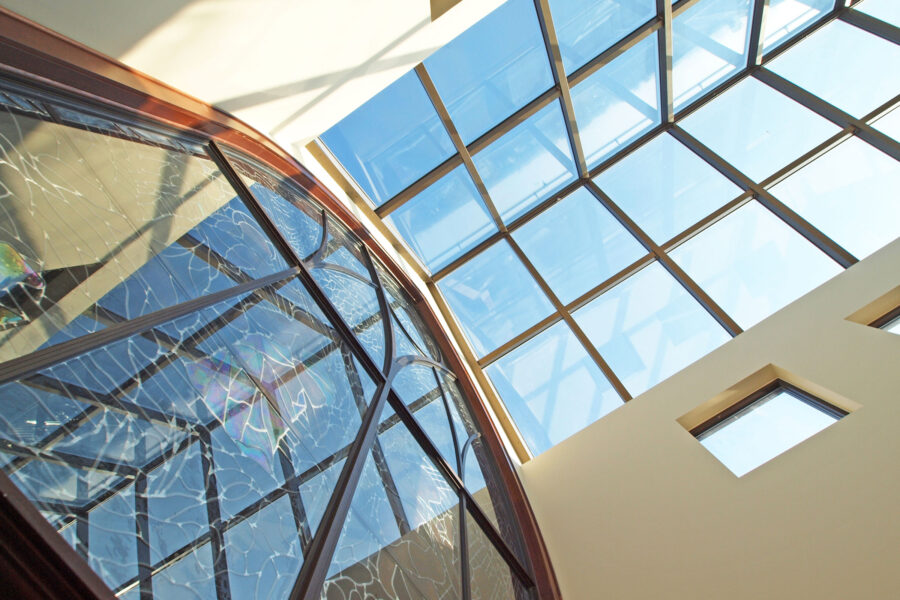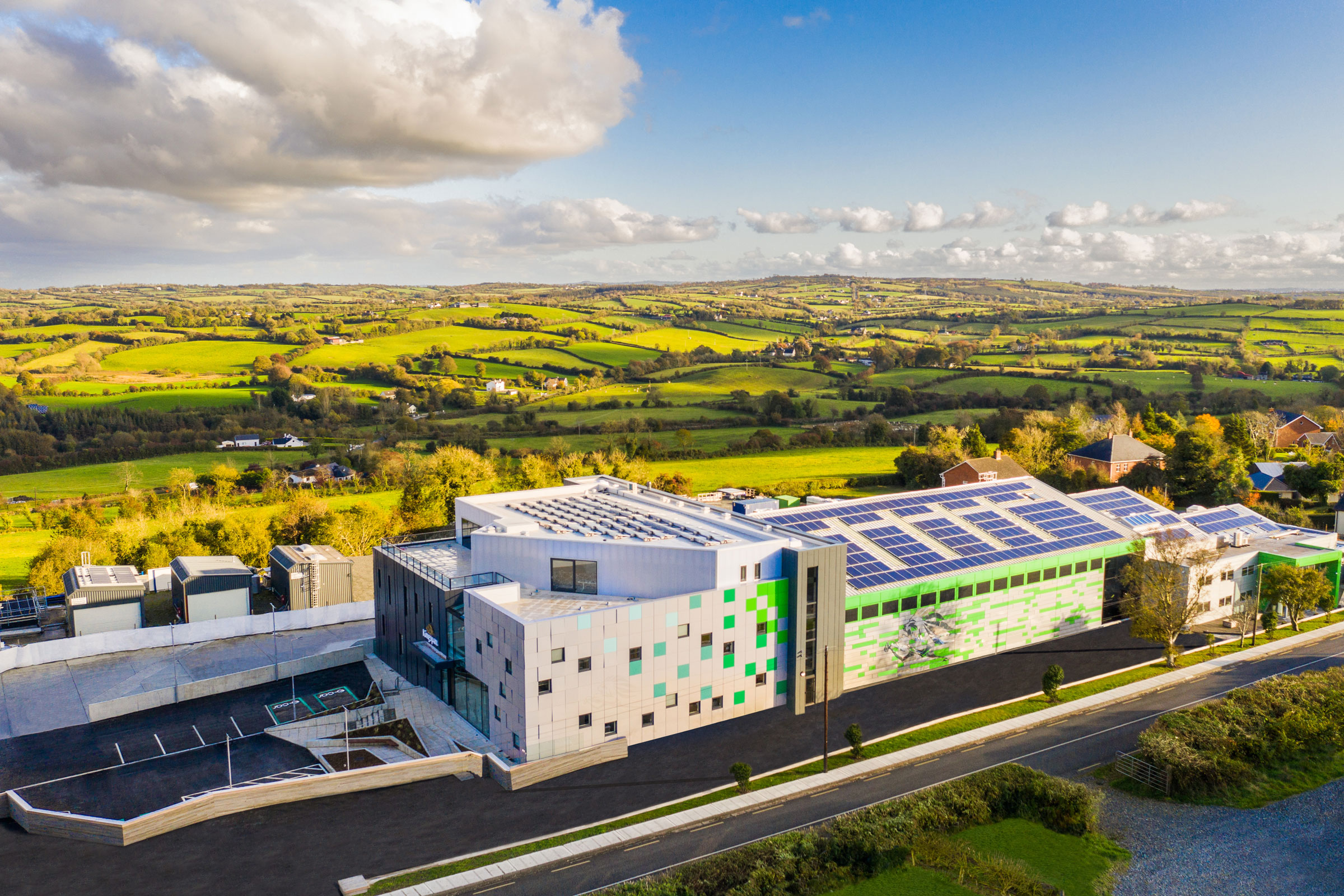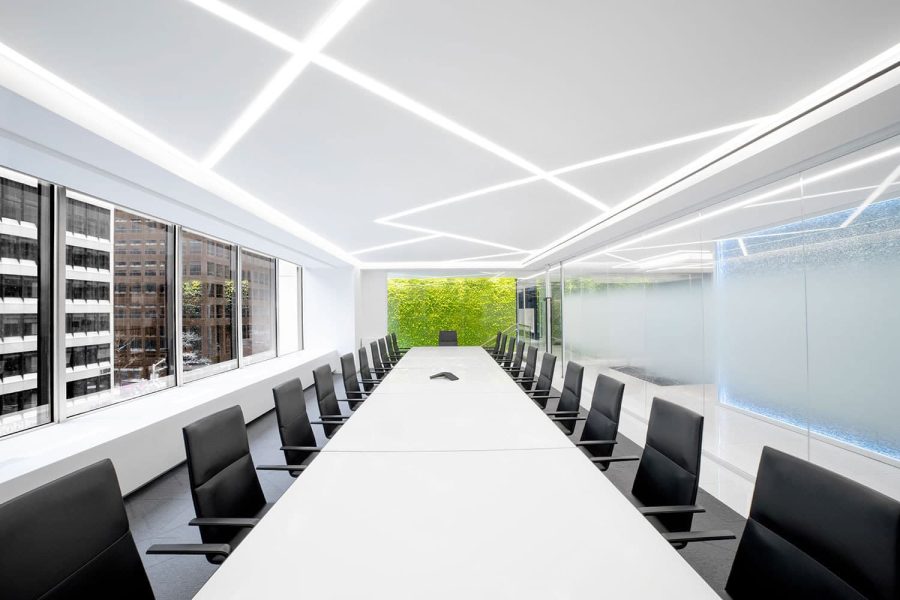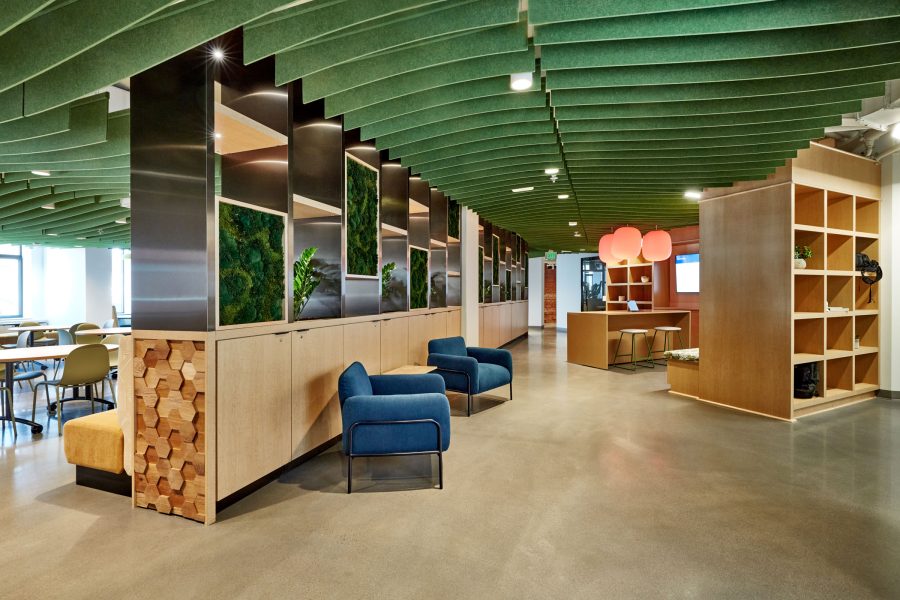Story at a glance:
- Circadian lighting helps maintain a proper sleep/wake cycle by effectively replicating wavelengths present in natural daylight.
- When implemented correctly, circadian lighting can help improve focus, increase productivity, reduce the risk of developing insomnia and other sleep disorders, and generally improve one’s health.
- BIOS Lighting currently offers some of the most effective circadian lighting solutions available.
A healthy circadian rhythm is made possible through a variety of environmental cues, with our planet’s light/dark cycle being the most influential.
“For optimal health, people need their circadian rhythms to reset every day,” Marty Brennan, project architect and daylighting specialist at ZGF Architects, previously told gb&d. “In the morning you need a dose of blue light, and as the day wears on, the light should become more of a redder hue.”
Historically daylight has provided the necessary signals for proper synchronization of the human circadian rhythm—but with the average American now spending 90% of their time indoors under sub-par artificial lighting, it’s becoming harder and harder for our bodies to maintain a healthy sleep/wake cycle.
Circadian lighting, however, can help remedy this problem. This article is an introductory guide to circadian lighting systems and the benefits they offer.
What is Circadian Rhythm?

Circadian rhythms are biological functions that occur inside an organism but which are synchronized to external signals within an organism’s environment. The human circadian clock is primarily influenced by Earth’s light/dark cycle. Photo courtesy of Kingspan Light + Air
Before we get into what circadian lighting is, let’s talk about what circadian rhythm is and the role it plays in our day to day lives. Often described as the body’s biological clock, the term “circadian rhythm” refers to those functions within our body that repeat each 24-hour cycle. In the broad sense, circadian rhythms are biological processes synchronized to external signals in an organism’s environment, with light being the predominant cue.
“The human circadian rhythms are the body’s natural clock. When your brain detects daylight and the changing spectral content over the course of the day, it tells your body to wake you up, and when darkness hits, it triggers your body to fall asleep,” Neall Digert, vice president of innovation and market development at Kingspan Light + Air, previously wrote for gb&dPRO.
As mammals our primary circadian clock is located within the suprachiasmatic nuclei (SCN) found in the hypothalamus, a part of the brain that helps regulate bodily functions by controlling the endocrine (hormone) system. The SCN receives information via the eyes and specifically the retinas, which contain photosensitive ganglion cells that in turn contain melanopsin, a photopigment activated by light.
How Does Light Influence Circadian Rhythm?

Daylight and Earth’s blue sky activate the melanopsin photopigment in our eyes, which in turn tells the body to stop producing melatonin and start getting ready for the day. As night falls and daylight wanes, melatonin production restarts and the body begins to wind down for sleep. Photo courtesy of Kingspan Light + Air
Light is the single most important factor when it comes to regulating circadian rhythm and is the means by which the SCN synchronizes the body’s master clock—but not all light is created equal, as not all light is capable of activating melanopsin efficiently. Melanopsin is generally accepted as having a peak spectral sensitivity somewhere in the wavelength region of 480 to 490 nm, which corresponds to a “sky blue” color on the visible light spectrum.
Earth’s blue sky is able to effectively stimulate melanopsin, boasting a blue light spectrum that ranges between 450 and 485 nm. As the sun begins to rise and our eyes detect this blue light, the melanopsin in our retinal ganglion cells is activated, signaling to the SCN to stop producing melatonin (the hormone that helps regulate sleep), raise the body’s temperature, kick-start digestion, and generally wake our bodies up.
“By exposing your body to daylight throughout the day, your healthy human circadian rhythm will have a significant role in regulating your sleep-wake cycle and have a positive influence on your eating habits and digestion, body temperature, hormone release, and other important bodily functions,” Digert says.
As night falls and the brain gradually receives lower—and warmer—light signals, the body is told to begin preparing for rest, a process that involves increasing the production of melatonin, slowing the metabolism, lowering cortisol levels, reducing body temperature, et cetera.
The Impact of Artificial Light on Circadian Rhythm

Most artificial lighting does not produce the wavelengths necessary to effectively activate melanopsin, leading to premature fatigue during daytime hours. At the same time, these lighting systems often provide too much blue light during the evening, inhibiting melatonin production and disrupting sleep. Photo by LJ Photography
Knowing what we now know about light’s relationship to the body’s biological clock, it should come as no surprise that the single largest disruptor of circadian rhythms is underexposure to natural sunlight and prolonged exposure to artificial light—a byproduct of our chronically indoor lifestyles.
Throughout most of history, humans have traditionally favored outdoor lifestyles in which the majority woke with the sun, spent a large portion of the day under it, and went to sleep soon after it set, thereby ensuring a normal circadian cycle. It is only very recently, however, that a large percentage of the population has started spending the majority of their time indoors, relying primarily on artificial lighting to complete tasks.
This artificial lighting is generally sufficient in allowing us to see what we are doing, but rarely does it provide the lighting signals necessary to facilitate a healthy circadian rhythm (i.e. it does not produce the wavelengths required to effectively activate melanopsin), resulting in fatigue and disorientation. To make matters worse, many of us now remain active long after sundown, illuminated by the exact same lighting we spend our days under—lighting that was not bright enough for daytime circadian stimulation, but which is now far too bright to allow our bodies to properly wind down for sleep.
Regular, repeated, or long-term desynchronization of the circadian rhythm can in turn lead to the development of insomnia and other sleep disorders, increase the likelihood of obesity and diabetes, and even elevate one’s risk of developing various cardiovascular diseases.
What is Circadian Lighting?

Circadian lighting helps support a healthy circadian rhythm by accurately replicating the biological effects of natural daylight as it changes throughout the course of a day. Photo by Chris Rogers
Circadian lighting, then, is a type of artificial lighting designed to enable and support a healthy circadian rhythm by effectively replicating both the visual and non-visual signals sent to our brains by natural sunlight throughout the day.
This distinction includes lighting systems that constantly provide blue light within the 480 to 490 nm range and are intended only for daytime usage, as well as those that target melanopsin’s peak spectral sensitivity during daytime hours but which can also be dimmed during the evening/night to wavelengths more conducive to sleep—the latter of which is typically considered to be the truest example of circadian lighting.
There is also a third type of circadian lighting system, one focused primarily on stimulating melatonin production during the evening rather than stopping melatonin production during the day. General Electric’s sun filled and relax LED bulbs, for example, intentionally limit blue light peak, never reaching the 490 nm wavelength required for optimal activation of daytime circadian rhythms—a quality that in turn makes them better suited for winding down in preparation for sleep.
Tech Spotlight: BIOS Lighting
Companies like BIOS Lighting specialize in the second type of circadian lighting systems, or those that may be adjusted to provide 24-hour wellness. All of BIOS’ circadian lighting products incorporate their patented SkyBlue light engine, a technology developed by former NASA engineers who helped design the LED light systems used aboard the International Space Station.
As the name suggests, SkyBlue is specifically designed to target that distinct “sky blue” wavelength of 490 nm—something very few products marketed as circadian lighting actually do—within the standard range of color temperatures (3,000 to 4,000K) using spectrally optimized LEDs. BIOS’ SKYVIEW, for example, is a dynamic circadian table lamp that uses the company’s SkyBlue technology to effectively replicate both the visual and melanopic information we receive from natural light throughout the day.
During the morning and afternoon, SKYVIEW combines the blue sky wavelength with warmer colors to create a subtle gradient that is much more comfortable to look at than traditional blue or white light. When sunset rolls around, SKYVIEW shifts to darker blues and purples before transitioning to warm amber light in the evening and finally a deep red for sleep.
The Benefits of Circadian Lighting

A glowing circadian orb above the conversation pit at the point of the building makes it look like a shadowbox after dark. Photo by Chris Rogers
Unsurprisingly, the main benefit of circadian lighting is that it helps support a regular circadian rhythm, which in turn translates to a healthier body and mind. Some of the specific benefits that come with circadian lighting, however, include:
Reduced Daytime Fatigue
When we receive proper lighting cues in the morning and afternoon, the pineal gland knows not to produce melatonin—the hormone that makes us tired—reducing instances of premature daytime fatigue. This in turn translates to higher levels of alertness, increased focus, faster reaction times, and generally makes it easier to perform tasks without error.
Better Sleep
Conversely, circadian lighting that greatly reduces or wholly eliminates exposure to blue light during the evening and at night helps our bodies properly wind down and start producing melatonin, leading to better and more restorative sleep. This results in a kind of positive feedback loop, wherein the better we sleep, the better we are able to perform the next day.
Improved Mood & Mental Health
Certain anxiety and mood disorders like depression, seasonal affective disorder, and bipolar disorder can often be linked in part to disruptions in one’s circadian clock-controlled responses like sleep and cortisol secretion. When applied correctly, circadian lighting helps properly synchronize sleep and hormone production, reducing the likelihood of developing or exacerbating mental health disorders.
Increased Productivity
Because circadian lighting helps improve focus, concentration, and overall cognitive function, it should come as no surprise that the usage of circadian lighting systems correlates to increased productivity, making it an excellent choice for offices and educational facilities.



